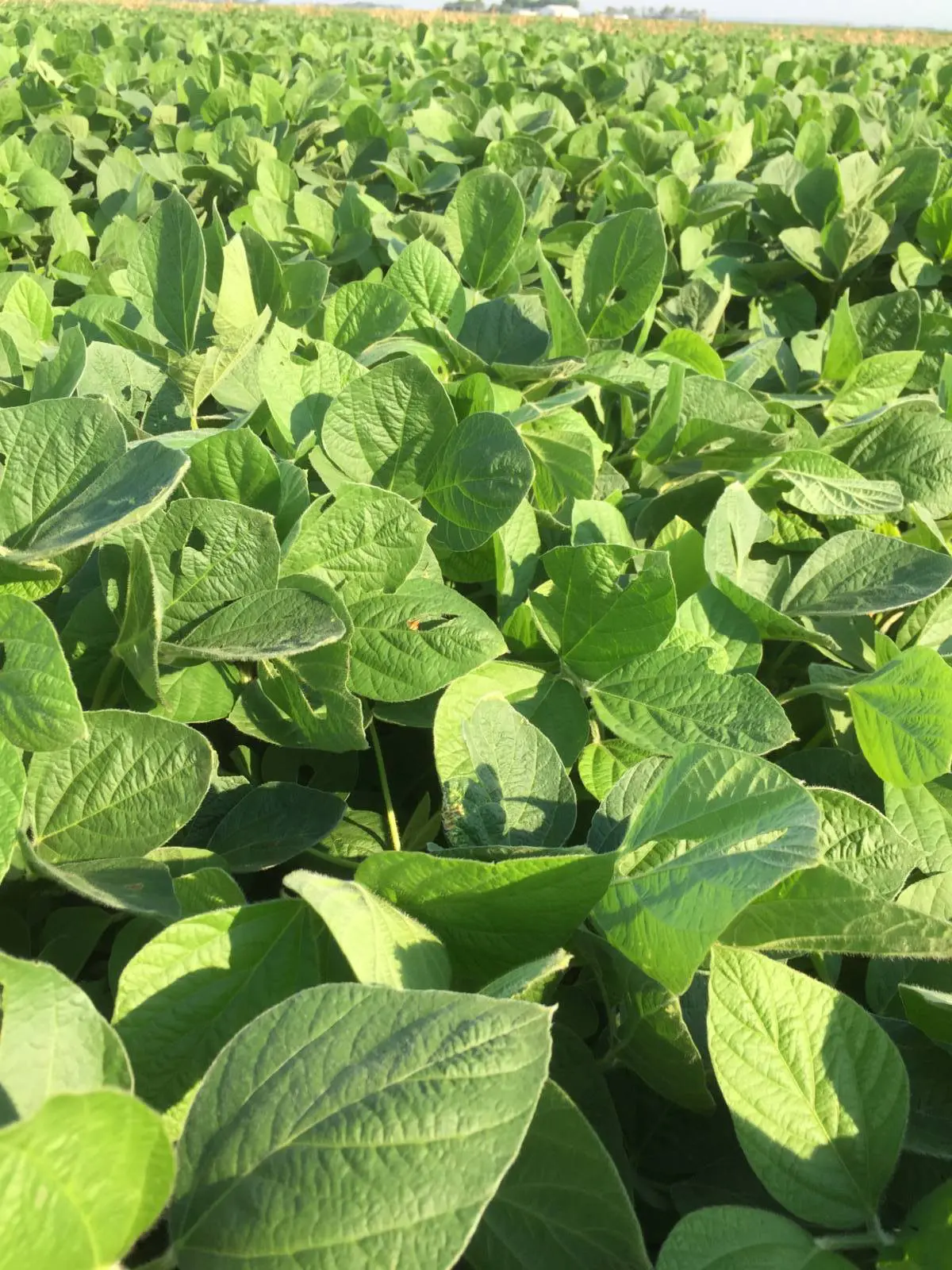 Our cool, stormy early spring has been followed by a stretch of dry weather in our area of the U.S. South. We have received limited rain since we started planting in late April. And now, it is unseasonably hot. In late June, we had a week of high temperatures above 37.7°C, or 100°F. Because of the weather conditions, we are spending much of our time monitoring water for our crops and livestock.
Our cool, stormy early spring has been followed by a stretch of dry weather in our area of the U.S. South. We have received limited rain since we started planting in late April. And now, it is unseasonably hot. In late June, we had a week of high temperatures above 37.7°C, or 100°F. Because of the weather conditions, we are spending much of our time monitoring water for our crops and livestock.
Though we planted later than average, the heat has allowed our crops to catch up to average growth stages for the end of June.
 Our soybeans are laid-by, which means that we’ve applied all the herbicides and other inputs we planned. Our early season work for soybeans is complete. The soybeans have just started blooming and developing pods. However, because of the drought and heat, we are irrigating the soybean planted in our fields with center pivot irrigation at least once a week. We are also scouting the soybeans for insects and weeds that escaped — or weren’t controlled by — our herbicide applications.
Our soybeans are laid-by, which means that we’ve applied all the herbicides and other inputs we planned. Our early season work for soybeans is complete. The soybeans have just started blooming and developing pods. However, because of the drought and heat, we are irrigating the soybean planted in our fields with center pivot irrigation at least once a week. We are also scouting the soybeans for insects and weeds that escaped — or weren’t controlled by — our herbicide applications.
Our corn has tasseled, and ear development is just starting. It requires intense irrigation right now.
The cotton was planted in early May, and it is about .5 m, or 20 inches, tall. We are currently monitoring it for insects with the help of scouting reports from the crop consultant we’ve hired. We are applying plant growth regulator to the cotton each week so that it will trigger the plants to reach early bloom stage by the end of June or beginning of July. At this stage, the cotton handles the dry weather better than our other crops, and we won’t start irrigating it regularly for a couple weeks.
 Given the weather this season, we expect to see big yield differences between our irrigated and dryland fields. We raise all our crops in both systems. Drought stress is hardest on our corn. The soybeans handle that stress a bit better, and cotton will be affected less, but with such hot, dry weather in June, all our dryland yields will be noticeably lower than our irrigated fields.
Given the weather this season, we expect to see big yield differences between our irrigated and dryland fields. We raise all our crops in both systems. Drought stress is hardest on our corn. The soybeans handle that stress a bit better, and cotton will be affected less, but with such hot, dry weather in June, all our dryland yields will be noticeably lower than our irrigated fields.
Our catfish are also sensitive to the current weather. The heat has raised the average temperature in our 12 catfish ponds to about 33°C, or 92°F. At that temperature, water doesn’t hold oxygen well. Oxygen levels are becoming more critical, requiring more time, effort and management. The catfish currently measure 20 to 25 cm, or 8 to 10 inches, long. Each day, we feed them about 18 kg of feed per surface hectare in the ponds, or 100 pounds per surface acre. Most of the time, they are invisible, staying deep in the water. They surface for daily feeding, because the high-soy protein feed floats on the water. However, we will also see them surface if low oxygen levels cause stress.
 Sunlight allows algae in the ponds to produce oxygen during the day. The algae serves as the “lungs” for each pond. This natural oxygenation stops at night. Each pond also has four electric aerators monitored by a computer system that turns them on as needed based on water oxygen levels. The fish surface near these aerators when stress. When needed, we supplement with two or three additional aerators run by a tractor.
Sunlight allows algae in the ponds to produce oxygen during the day. The algae serves as the “lungs” for each pond. This natural oxygenation stops at night. Each pond also has four electric aerators monitored by a computer system that turns them on as needed based on water oxygen levels. The fish surface near these aerators when stress. When needed, we supplement with two or three additional aerators run by a tractor.
In warm water, oxygen levels drop throughout the night. In addition to relying on our computer system that monitors the ponds, we are visually checking the ponds at midnight and 3 a.m. each day to see if the fish are stressed.
Our small herd of beef cattle is also feeling the heat. They graze in the mornings and evenings, but during the day, they seek out water and shade, much like we do.
Between irrigation and water oxygen levels, we are busy. But we are doing what we can to minimize the stress for our catfish, cattle and crops.

